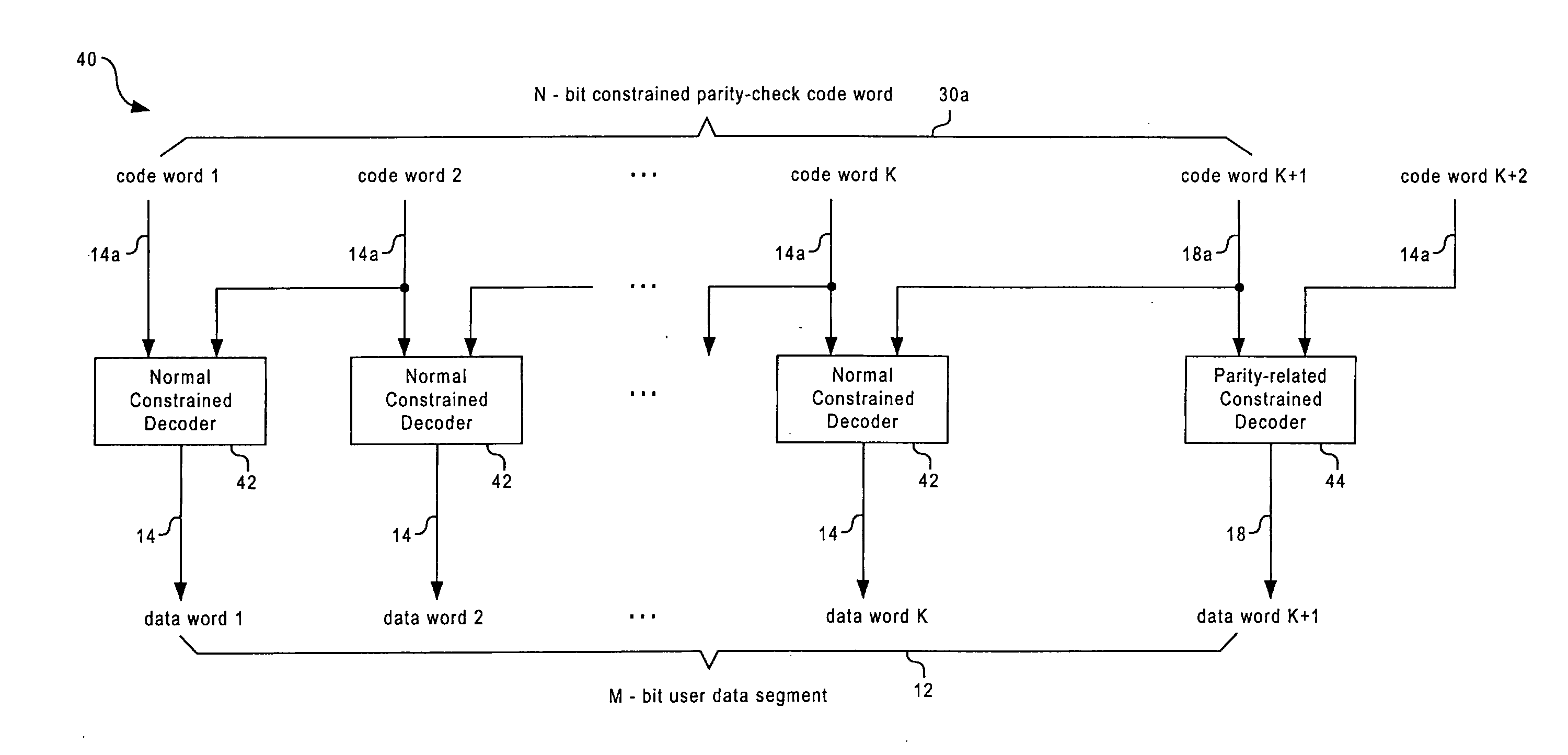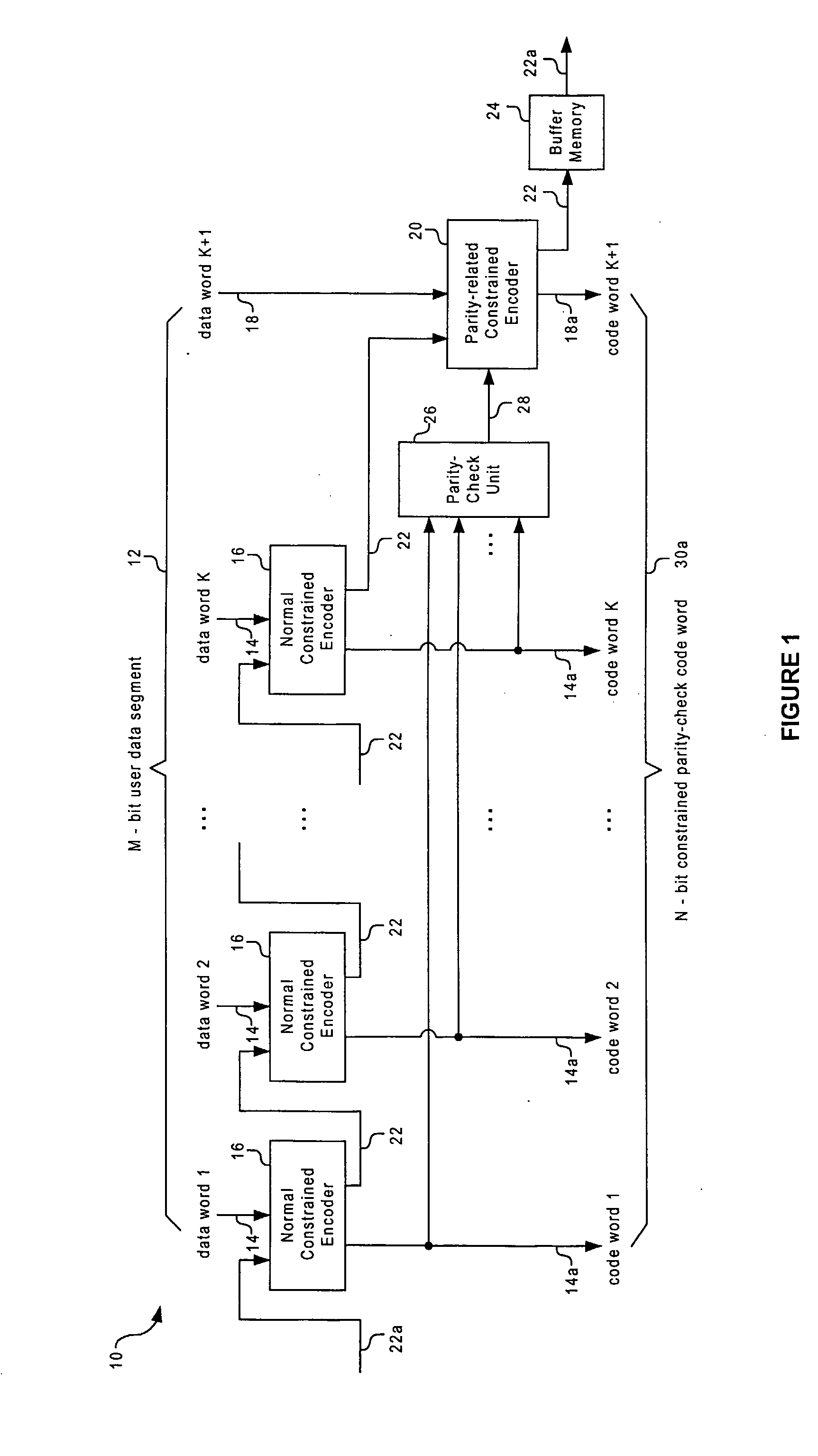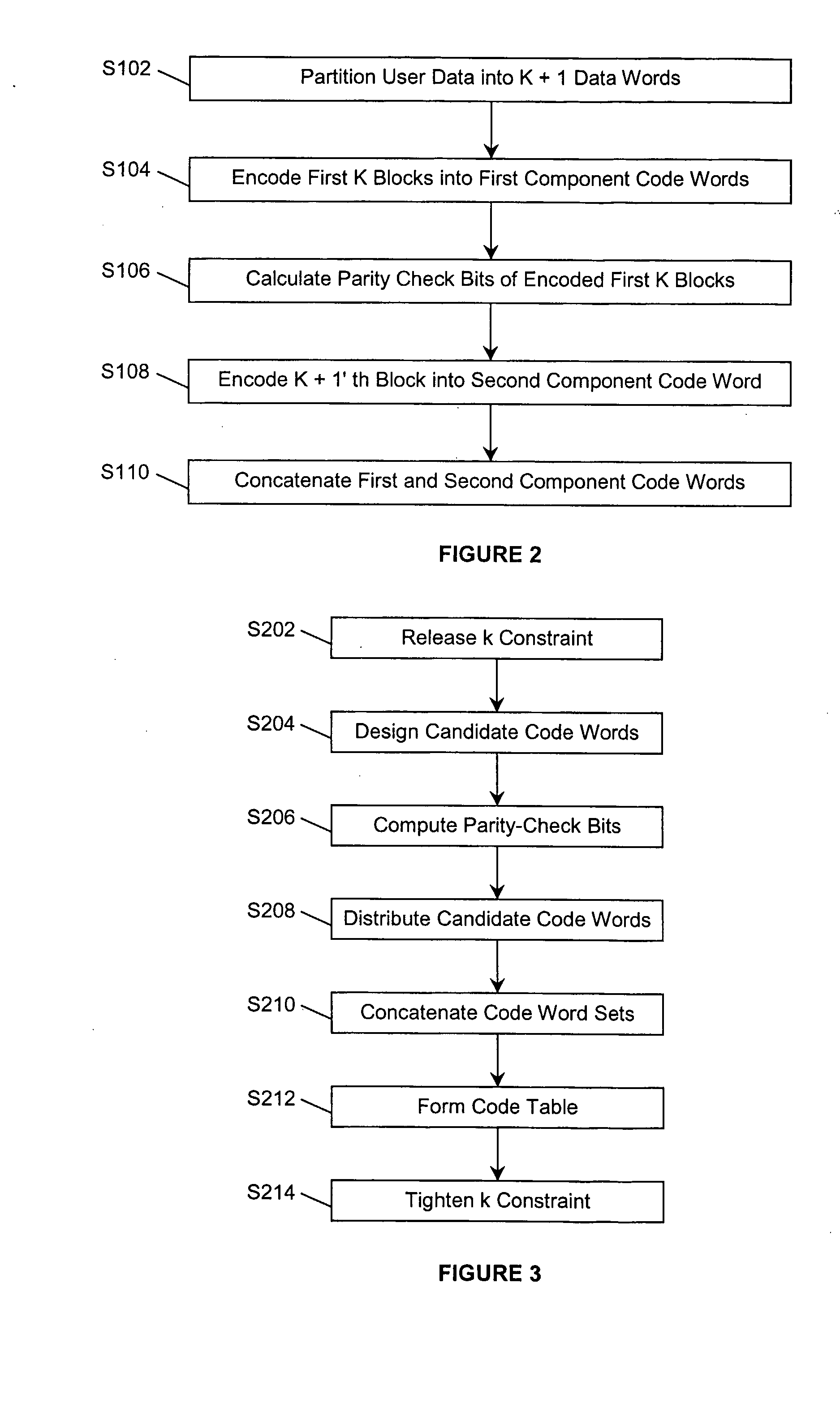Method And System For Encoding And Decoding Information With Modulation Constraints And Error Control
a modulation constraint and information technology, applied in the field of encoding and/or decoding information, can solve the problems of reducing unable to design constrained parity-check codes with minimum code-rate loss, and incurred code rate loss, so as to facilitate significantly simpler hardware implementation of encoder/decoder, simplify error correction, and reduce the number of parity-check bits
- Summary
- Abstract
- Description
- Claims
- Application Information
AI Technical Summary
Benefits of technology
Problems solved by technology
Method used
Image
Examples
first embodiment
2. Code Design Method
[0059]In a first preferred embodiment, the codes are designed in NRZI format. FIG. 1 is a schematic block diagram of encoding apparatus according to a first embodiment of the invention, in the form of a constrained parity-check encoder 10, which may, for example, operate according to the process illustrated in the flowchart of FIG. 2. As illustrated, an M-bit segment of user data 12 is partitioned into K+1 data words (step S102). Among these data words, the K leading data words 14 are individually encoded into first component code words (step S104) by normal constrained encoders 16. At the encoder outputs, K normal constrained code words 14a are obtained. The K+1'th data word 18 is encoded into a second component code word (step S108), which is denoted as the parity-related constrained code word 18a, by a parity-related constrained encoder 20. During encoding the data words into the two component code words 14a and 18a, following state information 22, for instan...
second embodiment
3. Code Design Method
[0083]In the above description of the code design, the coded bits are all defined in NRZI format. The present invention further proposes an approach to design the code in NRZ format. It may be preferable to encode the data in NRZ format due to the following reasons.
[0084]On the one hand, by making use of the parity-check results of the detected sequence of constrained parity-check code words as well as the channel side information, errors occurring in the output sequences of the channel detector can be corrected. The process of inverse preceding may propagate errors in the channel detected data sequence and enlarge the length of error events. This will cause an increase in the number of parity-check bits that are required for detecting errors.
[0085]On the other hand, carrying out error correction or post-processing for the constrained parity-check codes at the output of the channel detector is simpler and more straightforward than doing it at the output of the i...
PUM
 Login to View More
Login to View More Abstract
Description
Claims
Application Information
 Login to View More
Login to View More - R&D
- Intellectual Property
- Life Sciences
- Materials
- Tech Scout
- Unparalleled Data Quality
- Higher Quality Content
- 60% Fewer Hallucinations
Browse by: Latest US Patents, China's latest patents, Technical Efficacy Thesaurus, Application Domain, Technology Topic, Popular Technical Reports.
© 2025 PatSnap. All rights reserved.Legal|Privacy policy|Modern Slavery Act Transparency Statement|Sitemap|About US| Contact US: help@patsnap.com



